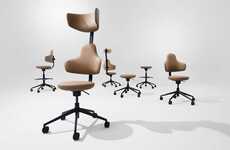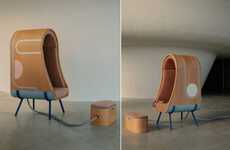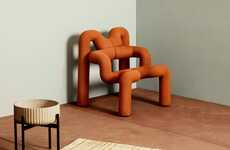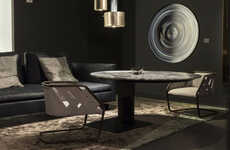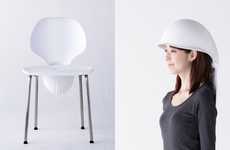
The Haptic Chair by Trine Kjaer Design Studio Focuses on Textures
Meghan Young — August 1, 2013 — Art & Design
References: trinekjaer.dk & contemporist
The Haptic Chair is aptly titled. Since the word 'haptic' refers to the different 'form[s] of nonverbal communication involving touch,' as written on Wikipedia, people will readily look for ways that the Haptic Chair communicates via form and texture. The design itself focuses more on the latter.
Created by Trine Kjaer Design Studio, the Haptic Chair boasts two specifically different materials. While the frame of the chair is wooden, the backrest and seat surface is fashioned out of a type of fabric. The designer writes, "Having in mind, the different haptic sensitivities of the body, the chair is designed to stimulate the hands with fine and detailed craftmanship, while the areas touching the back and the seat has a rougher and more tactile character." There is a lot of stimulation going on.
Created by Trine Kjaer Design Studio, the Haptic Chair boasts two specifically different materials. While the frame of the chair is wooden, the backrest and seat surface is fashioned out of a type of fabric. The designer writes, "Having in mind, the different haptic sensitivities of the body, the chair is designed to stimulate the hands with fine and detailed craftmanship, while the areas touching the back and the seat has a rougher and more tactile character." There is a lot of stimulation going on.
Trend Themes
1. Haptic Furniture - Furniture designers can consider using different textured materials to enhance the haptic experience of seating.
2. Sensory Design - Designers can focus on the sensory experience of users when creating products, such as using different textures to stimulate different parts of the body.
3. Hybrid Materials - There are opportunities to mix and match different materials to create a unique sensory experience, such as using wood and fabric in Trine Kjaer Design Studio's Haptic Chair.
Industry Implications
1. Furniture - Furniture companies can experiment with different materials and textures to create haptic seating experiences, like Trine Kjaer Design Studio's Haptic Chair.
2. Interior Design - Interior designers can incorporate haptic furniture and sensory design into their projects to enhance the overall experience of a space.
3. Textiles - Textile companies can develop new materials that focus on enhancing the haptic experience, like the fabric used on the backrest and seat surface of Trine Kjaer Design Studio's Haptic Chair.
2.8
Score
Popularity
Activity
Freshness



